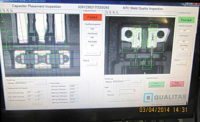When skilled labor is on a volunteer basis and revenue streams are nonexistent, it’s almost unthinkable to set a goal of doubling capacity with lean production standards—but Mobility Worldwide undertook and achieved the unthinkable.
Based in in Columbia, MO, Mobility Worldwide is a charity that builds carts for individuals with physical disabilities in resource-poor countries where wheelchairs are neither affordable nor equipped for rural durability. The organization began in 1994 when Larry Hills, a missionary in Zaire (now the Democratic Republic of the Congo), told Rev. Mel West, a pastor in Columbia, of the great need for three-wheeled, hand-cranked wheelchairs for victims of polio and landmines. West contacted his friend and inventor, Earl L. Miner, and the two began working on a prototype design.
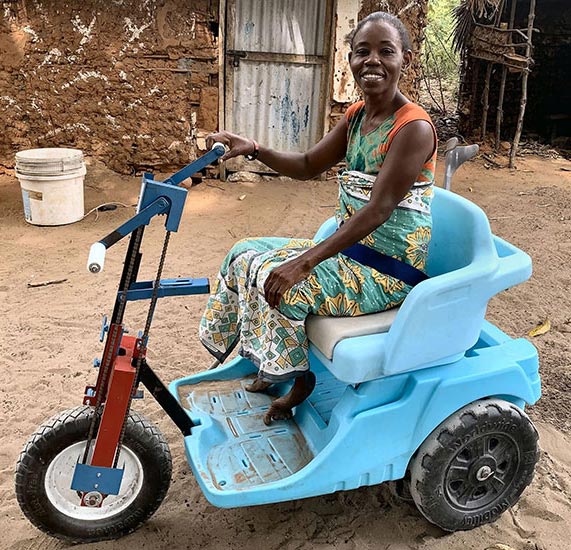
Mobility’s carts and accessories provide to provide more than just mobility. They can be configured as mobile shops, giving disabled people the opportunity for financial independence. Photo courtesy Mobility Worldwide
One year later, a prototype was ready for field testing. Miner and West shipped four of their Mobility Carts to Hills with the instructions to “put them in the worst place you can find, and see if they pass the test.” Hills did just that, and the carts exceeded expectations.
Today, Mobility Worldwide produces customizable carts in several models. The carts and accessories are designed to provide to provide more than just mobility. They can be configured as mobile shops, giving disabled people the opportunity for financial independence.
The carts are assembled by hundreds of volunteers at 31 affiliate workshops in the United States and Africa. The carts have been distributed in 106 countries. On Oct. 2, 2023, Mobility Worldwide delivered its 100,000th Mobility Cart, free of charge, to a 50-year-old disabled man in El Salvador.
Steve Andriano, a consultant and process engineer with the QL Group, volunteers at Mobility Worldwide’s headquarters in Columbia. His decades of experience in industrial manufacturing have instilled within him guiding principles for measurable success based on lean and Six Sigma methodologies. “I’m there as a force multiplier for the volunteer teams,” Andriano says. “I don’t have all the answers, but I’m here to help our improvement teams avoid false starts.”
Upon arriving at the Columbia facility, volunteers are directed to one of three functional areas, depending on their preference: wood shop, welding or assembly. From there, volunteer experts help newcomers get oriented and ready to work. The Columbia site is a learning experience for everyone, including Andriano. When he first started volunteering, he gravitated toward the welding department because it was a good opportunity to learn a new skill while making a positive impact in the world.
But with no prints, no bills of materials, no standardization, and a workforce made up entirely of volunteers unfamiliar with lean manufacturing, Mobility Worldwide found major hurdles while scaling up production to help those in need.
Columbia has a 12-month deployment plan, with the goal of doubling capacity from 2,000 to 4,000 carts produced per year. And, because volunteers typically only volunteer three to four hours at a time, the site operates at only 50 percent utilization. Therefore, Andriano identified that Mobility needed to create a workflow system that could actually handle a production rate of 8,000 carts per year.
“I’m here to clear the obstacles in the way of expanding our capacity,” Andriano says. “Things like, what do we need to make and how many units? The what, the when, the how—all that stuff.”
Every aspect of “all that stuff” eventually moved to within the charity’s grasp after implementing one key difference: standardized work instructions.
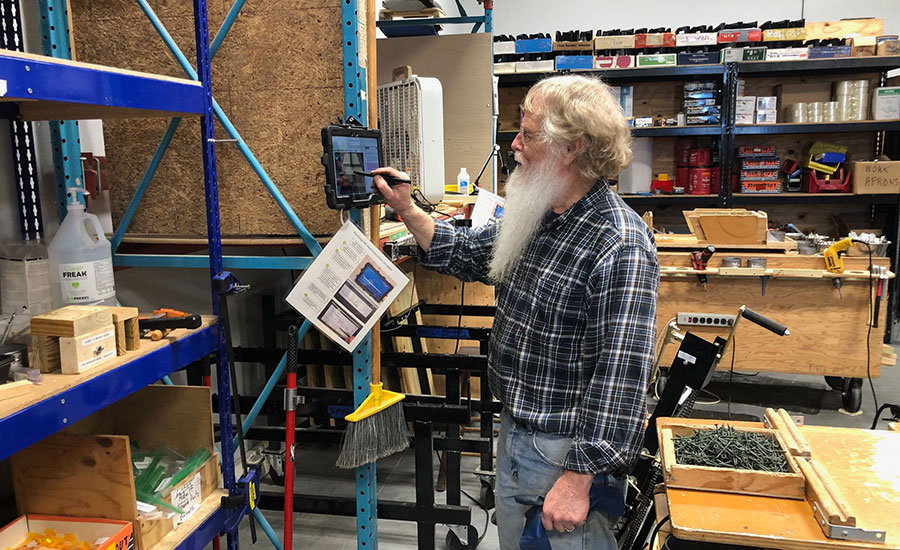
Digital work instructions have vastly improved the process of training volunteer assemblers. Photo courtesy VKS—Visual Knowledge Share Ltd.
Solving Logistical Challenges at the Source
Andriano started by considering the practical limitations that first spurred the charity into existence and which were also beyond his control: the rural difficulties of supplying life-changing mobility aid.
In the rural areas of Sierra Leone or Kenya, where carts are often sent, it is difficult to find a replacement part, especially one that fits the correct specifications. There are some components that, unlike the occasional broken axle, require medical-grade performance. For example, seat backs and seat bottoms need to be medical-grade because people who use the carts can’t shift as freely in their seat due to various physical limitations.
A major challenge for Mobility Worldwide is the impossibility of supplying replacement parts for broken carts. Ultimately, says Andriano, “We’re deploying things in an environment with no maintenance capabilities. It’s hard to fix a broken cart with no resources.”
Quality is of utmost importance. Without verification of proper assembly, the charity is unable to meet the long-term needs of its recipients.
To meet that goal, Mobility adheres to a Toyota philosophy called quality at the source, meaning that all inspection criteria is embedded into work instructions. “We’re striving for that quality,” says Andriano. “To have quality, we have to have specifications. To meet specifications, we have to embed them in our work instructions.”
So, the first step for expanding Columbia’s capacity was to introduce work instructions, and to make that process easier, Mobility chose software from VKS—Visual Knowledge Share.
In the beginning, the first draft of work instructions is rarely the perfect process, Andriano points out. It’s just the current best practice; it’s a method of discovery, revealing gaps in the current state of tribal knowledge. The next few drafts are where things start to come together to resemble best practices.
“There’s software out there that says, ‘This is how you’re going to do it.’ What I like about VKS is it doesn’t try to make me do things I don’t want to do—it allows me to do what I want to do,” says Andriano.
According to Andriano, three factors are necessary for success in manufacturing: production identification (including product identification, design, bill of materials, and prints), workflow systems (triggers, such as replenishment models and kanban), and work instructions (including definitions and standard operating procedures).
In Columbia’s case, the third element is bearing the weight of the other two elements, while the details are being ironed out. “We’re using VKS as a foundation and building the other things around it. It became a discovery tool as well as work instructions,” says Andriano.
Lean Methodologies: Which to Implement First?
Columbia is just beginning to apply lean methodologies like kanban, but the organization has seen impressive results so far since flow problems are pre-emptively smoothed out with work instructions.
“Before you have a kanban system, you have to have part numbers and you have to know what parts are on each cart,” says Andriano. “We’re figuring out material flow, CAD models, cloud modeling, all starting from the work instructions. VKS has been the foundation supporting our other success metrics—it’s defining the process.”
One of the biggest practical challenges was wasted time through uneven workflow. Being an industrial engineer, Andriano couldn’t help but notice that from the moment he walked into welding to the moment the first piece was completed was 40 minutes. Given that most volunteers were present four hours at a time at most, and a large portion of that shift was spent on just-in-time coordinating and herding volunteers through workstations, there wasn’t much time left in a shift to complete more than a couple of parts needed for assembly.
This discovery pushed Andriano to integrate light-duty cloud-based execution technology to streamline those actions. As well as work instructions, VKS now doubles as a manufacturing execution system (MES). Volunteers are directed through the workflow by the work instructions, eliminating the need for a heavy-duty onboarding and training process.
After applying lean principles like quality at the source and eliminating waste through workflow consolidation, capacity increased dramatically.
Just-In-Time Training for Volunteers
The vast majority of volunteers at the plant are retired. Scheduling shifts is difficult; Mobility prefers to keep things spontaneous. And, with some volunteers well into their later years, it’s not advantageous to require extensive training. Things need to be intuitive—ready-made for success.
There was too much scheduling variation at the heart of operations to accurately target cycle time metrics, “But learning curve reduction? Definitely doable,” says Andriano. “Prior to VKS, it was all purely tribal knowledge. There were no process specifications, no prints, no part numbers. Some parts look just like other parts, so you had a really good chance of welding the wrong parts together.”
Kaizen teams were formed from each of the three departments, and team members became the VKS authors, helping to standardize processes via VKS software. The standardized changes are simple, yet provide a big impact.
“One of our core guidelines is that the pictures should tell you what to do,” explains Andriano. “If you have a step that dictates ‘install as shown,’ and the picture is of a completed installation, that doesn’t show you what to do. You need pictures of someone actually performing the installation. Our philosophy is that a work instruction guidebook should follow every part made from cradle to grave.”
Andriano is confident that the learning curve has been significantly reduced. He estimates that training time has been reduced by at least 75 percent.
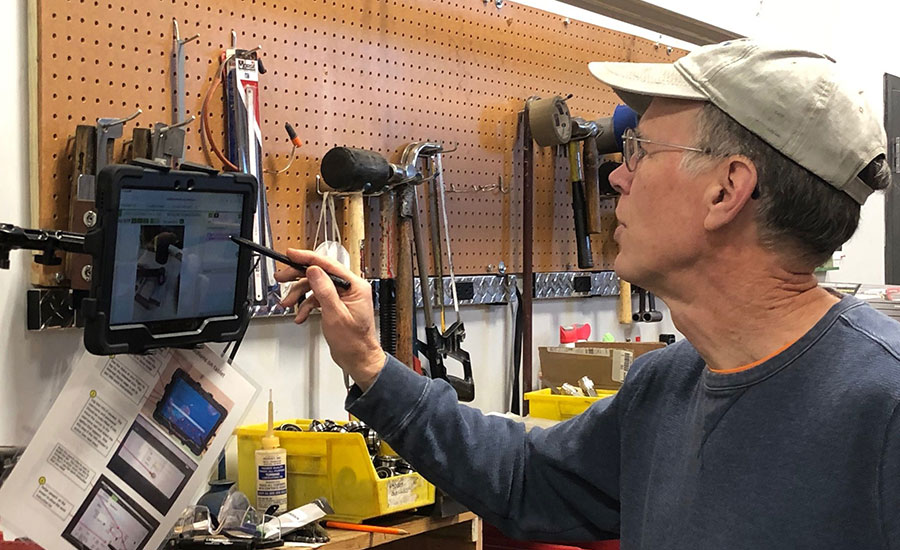
By eradicating waste through standardized instructions, Mobility has reduced its defect rate. Photo courtesy VKS—Visual Knowledge Share Ltd.
Identifying Gaps for Continuous Improvement
“One of the things I like about VKS is it’s an evolutionary tool,” explains Andriano. “You go out and grab something that becomes a baseline, and you move from there. It becomes a vehicle for long-term improvement because it identifies holes in your process.”
For example, one hole in Mobility Worldwide’s process was defining “perpendicular” for quality standards in assembly. A volunteer may come across this direction and wonder about the margin of acceptable error: Was a discrepancy of 5 to 10 degrees acceptable? What about 10 to 15 degrees?
VKS authors revisited the instruction and found a square tool that measured the proper 90 degrees. They took a picture of someone applying the tool for visual confirmation, and uploaded it to the work instructions. They photographed a properly completed measurement, and also juxtaposed it with a poorly completed measurement to plainly show the difference in quality for the next volunteer unsure about the next step.
“VKS has become our de facto quality system,” he says. “It’s a quantum leap difference in our training process.”
When new volunteers walk in, they can be oriented at a station immediately instead of needing hand-holding throughout the whole process. Remember that welded assembly that required 40 minutes to produce? Now, the same process requires just 10 minutes—an impressive 400 percent increase in productivity.
Expanding Capacity Through Skills Sharing
The volunteers thrive off of standardized work instructions because it gives them the confidence to do new things. Clear instructions remove any doubts about their performance.
Andriano has noticed that volunteers have spread out more widely across the shop floor instead of sticking at one or two stations where they’re most familiar. This confidence in approaching new areas of production has allowed Mobility to coordinate more entry level jobs overall, thus expanding horizontal capacity.
Instead of the same regulars volunteering at the same stations, individuals from other departments can expand their skill sets by trying out something new. In this way, standard work instructions have addressed the challenge of maintaining a keen, up-to-date labor force.
It’s also eliminated stress. “When you don’t have anyone around to tell you what’s good and what’s bad, most volunteers are very hesitant to do anything that is complicated because they don’t want to make mistakes,” says Andriano.
With VKS taking on the burden of error-proofing, volunteers are confident in their abilities because their actions are confirmed as they move through standardized work instructions.
Maximizing Manpower
A group of 10 volunteers dropping by the Columbia site used to require an extra 10 seasoned volunteers to help the group get oriented on a workstation. With VKS freeing up manpower, the same 10 volunteers require only one or two team leads to get oriented. Work instruction software can almost halve the manpower spent on onboarding, freeing up labor to achieve higher production goals.
Work instructions perfectly fill the gap between one-on-one onboarding and throwing workers into the deep end to learn by doing. It’s the best of both worlds—step-by-step and immersive instruction.
The few times that Andriano has noticed assembly errors, such as the wrong type of lumber used for a seating component, they’ve been easy to identify and also doubled as good learning moments for catching defects and fixing quality specifications.
“That’s why we want the team members to review the work instructions every time,” Andriano stresses. “We all make mistakes.”
By eradicating waste through standardized instructions, Mobility has reduced its defect rate.
“Most of their questions are already embedded in the work instructions, so they start to gain that confidence,” says Andriano. “It’s like self-checkout. That’s the biggest benefit.
“VKS is how you build a team. You overcome obstacles together. You evolve.”
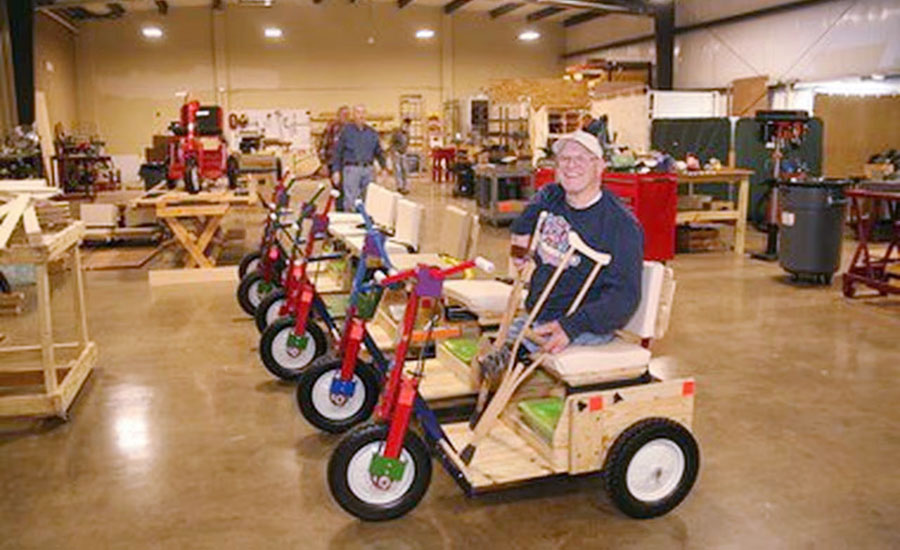
On Oct. 2, 2023, Mobility Worldwide delivered its 100,000th Mobility Cart, free of charge. Photo courtesy Mobility Worldwide
Down the Road
Mobility shows no signs of slowing down. They’re at approximately 65 percent completion of their growth mandate, with about 150 software-based guidebooks walking volunteers through the details of woodworking, welding and assembly.
“I think the biggest problem we faced before VKS has been limitations on what people can do,” he says.
The impact of VKS reaches far beyond the minutiae of part traceability and standardization. Andriano describes the exponential good radiating from team efforts.
“Maybe you’ve been building these carts for nine years. But now, with VKS, you’ll be putting your stamp on how they’re built in the future, too,” he says.
With such unyielding optimism, it seems the limitations of what these volunteers can do really are truly miles away.
For more information on work instruction software, click https://vksapp.com.
For more information on volunteering or donating to Mobility Worldwide, click https://mobilityworldwide.org.
ASSEMBLY ONLINE
For more information on digital work instructions, read these articles:
Software Provides Work Instructions, Ensures Quality and Collects Data
Visual Instructions Aid Assembly of Autonomous Vehicles
Electronic Work Instructions Come of Age






